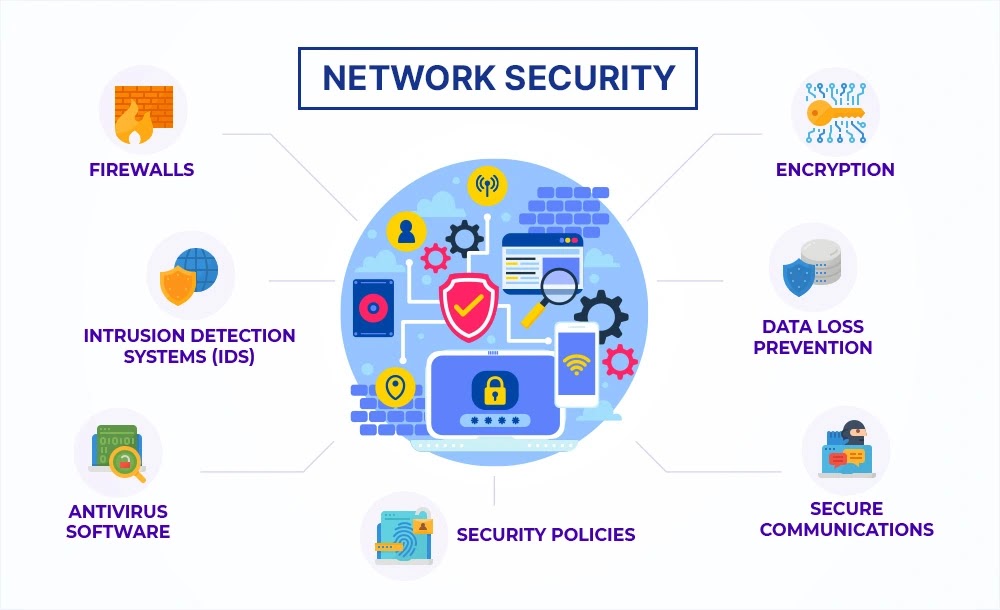
A Simple Checklist for Choosing the Right Network Access Control System
Key Takeaways:
- Determine essential features for an effective NAC system tailored to your organization’s needs.
- Understand the importance of scalability and integration capabilities within a NAC system.
- Recognize the role of advanced technologies like AI in modern NAC solutions.
Understand the Importance of NAC
Choosing the right Network Access Control (NAC) system is critical for organizations striving to protect their digital assets in an increasingly interconnected world. NAC systems act as gatekeepers, ensuring that only authorized users and devices can access network resources, thus maintaining data confidentiality, integrity, and availability. Understanding the various use cases of NAC is vital for revealing its significance in enforcing comprehensive security protocols across diverse industry verticals. Beyond preventing unauthorized access, NAC systems play a crucial role in maintaining a controlled environment within the network, which is crucial for minimizing data breaches and security incidents. In today’s digital era, where threats are increasingly sophisticated, a well-implemented NAC system is a cornerstone of an organization’s cybersecurity strategy, enhancing resilience against potential intrusions and paving the way for secure business operations.
Features to Consider in a NAC System
The decision to integrate a NAC system into your organization should start with identifying the essential features that align with your unique operational environment. Key elements of a robust NAC system include multifactor authentication, a critical security measure that introduces an additional verification step, thereby reducing the likelihood of unauthorized access through compromised credentials. Additionally, efficient network monitoring and management play a significant role, enabling real-time oversight of network activity, which is crucial for identifying anomalies and potential threats. Reporting capabilities provide administrators with detailed insights into access patterns and user behavior, facilitating proactive measures against security breaches. Centralized policy management ensures the consistent application of security protocols across all network layers, crucial for maintaining a unified security posture. Lastly, real-time alerts are indispensable, offering immediate response capabilities that swiftly mitigate network vulnerabilities, ultimately safeguarding the organization’s digital ecosystem.
Scalability and Flexibility
As organizations expand their operations, their technological infrastructure and security requirements naturally evolve. Choosing a NAC system that emphasizes scalability and flexibility is fundamental for accommodating future growth. Scalable NAC solutions are designed to seamlessly integrate an increasing number of users and devices without diminishing network performance or security. Consider solutions that support modular enhancements or cloud-based configurations, which are typically more adaptable to unforeseen changes in business operations. Such flexibility is advantageous in today’s dynamic technological landscape, where businesses are expected to rapidly adapt to market shifts and evolving security threats. With a scalable NAC, organizations can maintain an effective security posture, ensuring that their networks stay resilient and secure amid growth and new technological integrations.
Integration Capabilities
A NAC system’s ability to integrate with existing IT infrastructure is another critical consideration affecting its overall effectiveness and ease of implementation. Organizations often operate heterogeneous networks comprising multiple operating systems and a range of third-party security tools, requiring a NAC solution to complement and enhance these diverse environments. To facilitate seamless integration, look for NAC systems that offer open APIs, allowing them to communicate effectively with other software applications and security frameworks. This ensures a more cohesive security environment, minimizing disruption during deployment and streamlining ongoing management. By achieving smooth integration, businesses can consolidate their security measures, simplify policy management processes, and enhance overall system performance, thus enabling a more proactive stance against cybersecurity threats.
Read Also: Streamline Your Showcase: Top Tips for Flawless Interactive Screen Presentations
Advanced Technologies in NAC
Modern NAC systems increasingly leverage advanced technologies like artificial intelligence (AI) and machine learning to bolster their threat detection and mitigation capabilities. These cutting-edge technologies empower NAC systems to autonomously identify irregular patterns and anomalies, predicting potential security incidents before they escalate into full-blown attacks. According to Forbes, AI has significantly transformed the landscape of cybersecurity by improving system agility, reducing reliance on manual monitoring, and enhancing the speed and accuracy of threat responses. Implementing NAC systems with AI capabilities allows businesses to take a more proactive approach toward network security, effectively decreasing vulnerabilities and fortifying defenses against increasingly sophisticated cyber threats. Organizations with AI-enhanced NAC solutions can stay one step ahead as these technologies evolve, ensuring robust protection in an ever-changing digital environment.
Vendor Support and Reputation
In choosing a NAC system, the level of vendor support and the vendor’s reputation should not be overlooked. Comprehensive customer support is crucial for navigating the implementation phase, ensuring successful integration and addressing any technical challenges that may arise. Assessing a vendor’s reputation involves evaluating their long-term market presence, client testimonials, and track record of innovation and product reliability. Engaging with a reputable vendor who demonstrates a commitment to continual improvement assures organizations that their NAC solution will consistently meet high performance and security standards. Moreover, vendors with a history of excellence offer a degree of reassurance, providing businesses with the confidence necessary to rely on their NAC system to maintain their network’s integrity and security over time.
Conclusion
Selecting the best Network Access Control system is a complex process that calls for careful consideration of important features, scalability, integration potential, vendor support, and technology developments. By adhering to a structured checklist approach, businesses can systematically evaluate NAC solutions to identify the best fit for their unique security requirements. Implementing a suitable NAC system empowers organizations to comprehensively protect their digital infrastructure comprehensively, ensuring secure and efficient operations amid ever-changing cyber threats. Businesses with advanced NAC systems can confidently navigate these challenges as technology continues to reshape the cybersecurity landscape. This allows them to integrate growth and innovation seamlessly within their digital ecosystems and reinforces their commitment to strong security practices.






